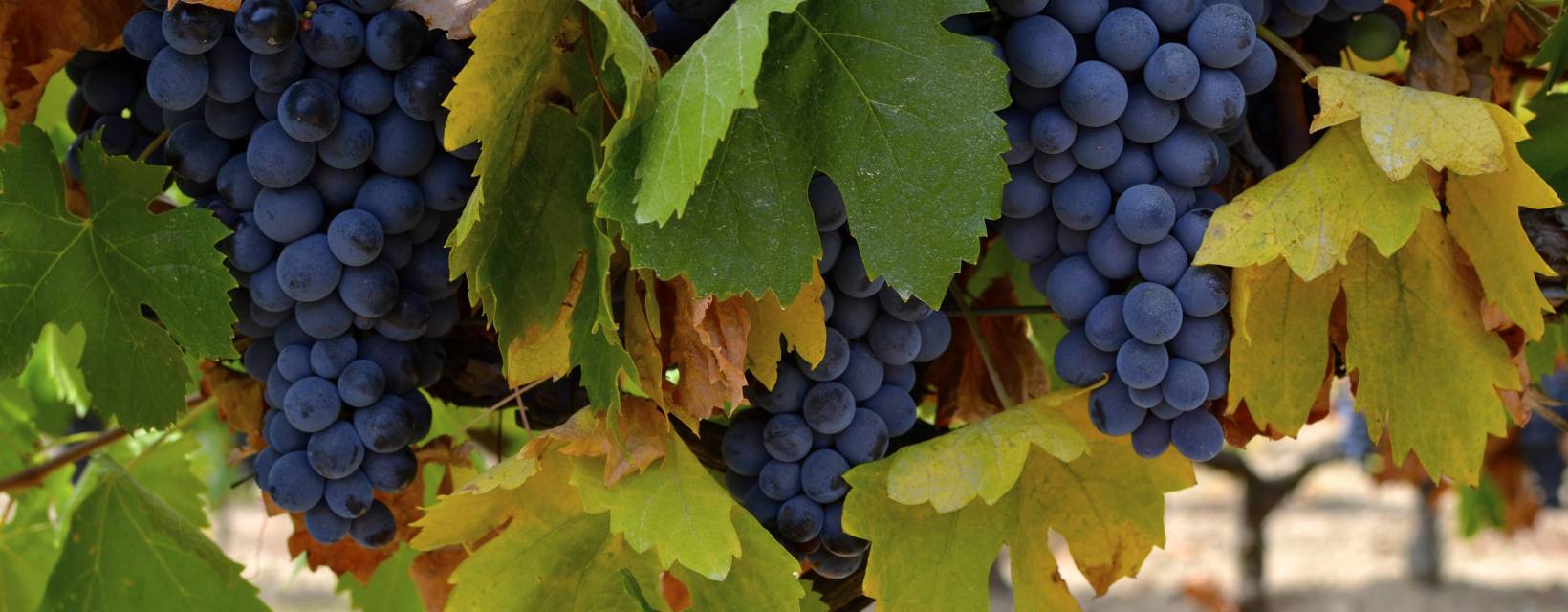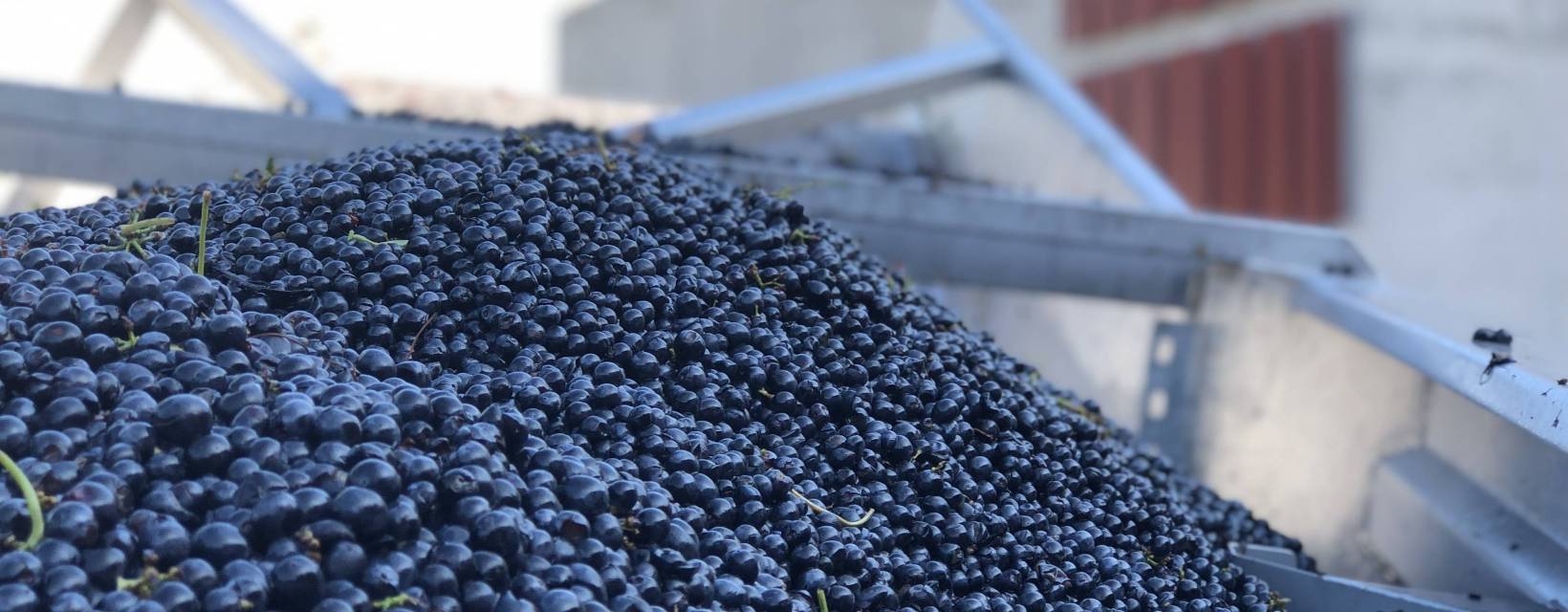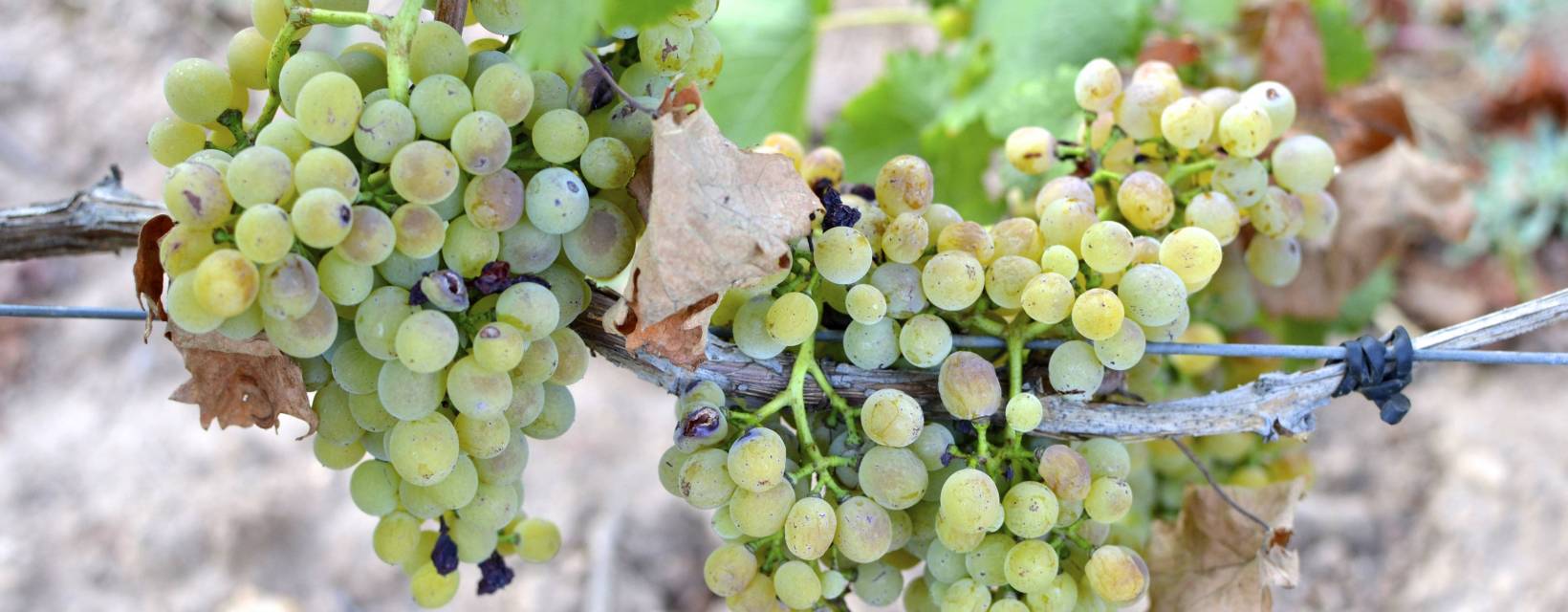
Our vines and the strict regulations of the appellation Côtes de Provence
Rosé and red wines of Côtes de Provence - both subject to the same regulations - are in principle “Cuvées” (blends). This means that different grape varieties are either pressed or fermented together or that the final product from different varieties is blended together. The composition of the blends is called “assemblage” in France. Blending varieties with different characteristics and profiles to produce high quality wines is one of the traditional key skills of artisinal winemaking. A well-made “Cuvée” will taste better than each individual variety on its own. That is why wines from the Rhone valley, Bordeaux, Tuscany or the Rioja region are, like wines from Provence, often blends or “Cuvées”.
A wide variety of grape varieties are permitted for rosé and red wines of the “Appellation Côtes de Provence”. The so-called "cépages principaux" (main varieties) are Cinsault, Grenache, Mourvèdre, Syrah and Tibouren. At least two of these varieties must always be used. The share of the main varieties in the blend must be at least 80%. The share of a single main variety should not be more than 90%.
Varieties approved as “cépages secondaires” with a maximum share in the blend of 40% are Barbaroux, Calitor, Carignan and Cabernet Sauvignon. The grape varieties Barbaroux and Calitor have, however, not been planted since 1995 and are gradually being replaced by superior varieties.
The maximum number of plants per hectare is 4000. Yields are limited to a maximum of 55 hectoliters per hectare.
In addition to the main varieties of the Côtes de Provence appellation we inherited four classic Bordeaux varieties from the former owners of our estate: Cabernet Sauvignon, Cabernet Franc, Merlot and Sauvignon Blanc. Together with some Viognier planted recently these "first class" varieties help us us to produce our distinct range of IGP wines (Vins de Pays des Maures).

Our red vines
Syrah belongs to the quartet of noble red grapes, along with Cabernet-Sauvignon, Merlot and Pinot Noir. Syrah is known as "the grape" of the Rhône, were it has been cultivated since ancient times. Today, it is still the only red grape variety authorised in the northern Rhône appellations (Côte-Rôtie, Saint-Joseph, Hermitage, Crozes-Hermitage and Cornas).
According to legend, Syrah was brought back in 1224 from a crusade, travelling via the Iranian city of Shiraz. This may explain the name Shiraz (instead of Syrah) in Australia, California, Chile and South Africa. In 1998, however, DNA analysis proved that this grape variety does not owe its name to ancient Persian viticulture, but is the result of a cross between the French grape varieties Dureza (a rare variety originating in the Ardèche) and Mondeuse Blanche (originally from Savoie).
The dark berries of the medium-sized bunches are rich in tannins and, thanks to their extreme pigment density, produce wines with intense colours. The Syrah grape variety thrives in arid, dry soils. Like no other red grape variety, it reflects the different terroirs in its aromas and character. Thus, in cooler European wine regions, notes of pepper, spices (cloves) and herbs dominate, while in warmer ‘New World’ wine regions, more opulent and powerful aromas of ripe red berries, chocolate or violets predominate. Syrah wines also appeal for their balanced tannins, which are both powerful and velvety, and for their ageing potential.
Today, Syrah is grown on around 180,000 hectares worldwide. About a third (roughly 60,000 hectares) is in France. Australia, where Shiraz is the most widely grown red grape variety, has around 40,000 hectares. Full-bodied and fruity Syrah or Shiraz wines are also very popular in the United States (California), Chile, Argentina, South Africa, Spain (Priorat), Italy and Switzerland (Valais).
We are very enthusiastic about Syrah. This is especially true of the old vines planted in 1981 and 1983 that we select for our Indigène. They have very deep roots to absorb the essence of our terroir: the heat of summer days, the coolness of nights, the herbs of Provence and the Mistral wind. Que Syrah, Syrah!
Grenache Noir, a sweet grape variety with a thin skin, offers a clear red wine of character. Originally from the ancient kingdom of Aragon and very present in Rioja, Garnacha Tinta is the most important grape variety cultivated in Spain. With 100,000 ha it is also the most widespread variety in the vineyards of the south of France, found in almost all the appellations along the Mediterranean coast. Grenache prefers stony, hot and arid soils, as well as a very dry environment, producing wines that can be kept for a long time. Sensitive to disease, the windy climate is beneficial to it. Fruity and full-bodied, wines made from Grenache develop aromas of white pepper, black olive, rosemary, red fruit and plum in the mouth. As they age, they evolve towards mocha, chocolate or tobacco. Grenache is a perfect blend with Syrah.
Cinsault is a black grape variety producing a fine white juice, probably originating from Provence. It prefers poor soils for quality production. Cinsault only accounts for 30,000 ha in France and about 45,000 ha worldwide. It is a tardy grape variety that needs sunshine and resists drought. Cinsault produces quite well but is fragile when it comes to diseases. It grows on arid and dry soils. Its bunches are large, composed of large berries with very juicy flesh. Sweet and slightly acidic, this succulent and dense grape is perfect for summer rosés with its peach, raspberry and strawberry aromas.
Cabernet Sauvignon is considered the star of the wine world with its aromatic complexity, high concentration of tannin and pigments, and exceptional ageing potential. No less than 170,000 hectares are devoted to it from Moldova to South Africa. In 1997, an analysis of its DNA carried out by the famous Davis Wine University in California revealed that Cabernet Sauvignon is the result of a cross between Cabernet Franc and Sauvignon Blanc. It needs warm soils to reach a perfect degree of maturity. Characterised by aromas of green pepper, blackcurrant, leather, cedar, spices and dark chocolate, it is blended with the fruity Merlot or Cabernet Franc to achieve its best expression.
Cabernet Franc is the noblest red variety of the Pays de la Loire. Particularly in Bourgueil and Chinon where it has been highly appreciated since the time of Rabelais, as much for its raspberry, blackcurrant and liquorice aromas as for its balanced structure with fine, smooth tannins. Its velvety more fine tannins make the wines more attractive than those of Cabernet Sauvignon. Today, also highly appreciated, Cabernet Franc only plays a minor role in Bordeaux and the South of France. Of course with the exception of the famous Château Cheval Blanc, where the percentage of Cabernet Franc is close to 60%. Cabernet Franc is also grown in northern Italy, Australia, California and New Zealand and appreciated for its ability to age well.
Merlot is perfectly adapted to very different soils and climatic conditions. It became one of the most popular grapes with around 100,000 hectares in France and 100,000 worldwide in Australia, California and Ticino. Resistant, it thrives on deep and cold soils such as in the Bordeaux region in Pomerol and Saint-Emilion. Its sweet, full-bodied wines are known for their beautiful deep red colour and their variety of aromas with notes of slightly spicy red fruit and plum, with a soft, strong structure and silky tannins.

Our white vines
Rolle (Vermentino) is one of the most sophisticated varieties of white in the Mediterranean cultivated mainly in Provence, Italy, Sardegna and Corsica on 7000 ha. Probably derived from a variety of Malvasia originating from Madeira (malvasia) which transited through Spain before arriving in Corsica, it was transported to Italy via Liguria in the 14th century. In Corsica, it is called Vermentinu, and in Italy Vermentino, giving full-bodied, highly aromatic wines with aromas of fruit, flowers, melon, aniseed or even mimosa. In our Provence terroirs, these wines develop notes of citrus fruit, green apple, fresh pear and lime wood.
Viognier is characterised as much by its rarity as by its great finesse and complexity of aromas, so moving that they escape description: honeysuckle, lime, apricot, quince, almond blossom, spices, dried fruit, hawthorn blossom, iris, gingerbread, mango, tobacco, acacia honey with a touch of musk, mineral, peach, violet and lime blossom...Very fragrant, the Viognier wine is extraordinarily fat, supple not to say unctuous. It does not tolerate oxidation. This ancient grape variety has had an eventful history, full of twists and turns, to the point where it almost disappeared... Originally, Viognier was grown exclusively in the northern Côtes du Rhône, from Vienne to Valence. Originally part of the grape varieties of the Condrieu, Château Grillet and Côte Rôtie appellations, it recently became popular in California and Australia, in many Portuguese wine regions and in southern France.